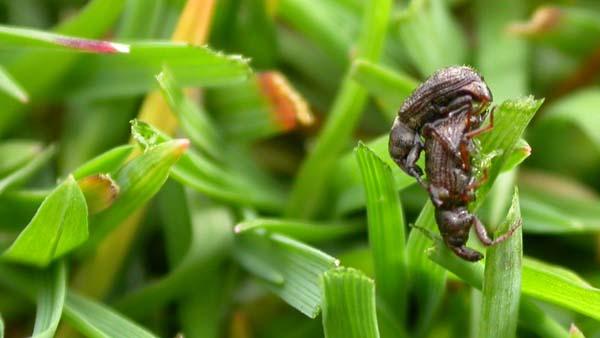A research blog, additional research sites and new control strategies are among a host of upgrades to Syngenta's WeevilTrak site designed to help golf course superintendents maximize efforts to control annual bluegrass weevil.
 Once registering for WeevilTrak updates, golf course superintendents will have access to blog posts and receive emails from select researchers throughout the spring and summer. The WeevilTrak Blog will provide live updates from the field to improve ABW tracking and recommended solutions all season long.
Once registering for WeevilTrak updates, golf course superintendents will have access to blog posts and receive emails from select researchers throughout the spring and summer. The WeevilTrak Blog will provide live updates from the field to improve ABW tracking and recommended solutions all season long. Now WeevilTrak also delivers a more comprehensive, geographical look at ABW pressure throughout the Northeast and in areas where ABW populations are spreading such as Ohio and North Carolina. Several new golf courses have been added to the existing program for improved tracking accuracy. Two new researchers, Rick Brandenburg, Ph.D., from North Carolina State University and Albert Koppenhöfer, Ph.D., from Rutgers University, have joined the program.
Registered users also will benefit from the addition of Ference insecticide to the Optimum Control Strategy. With the active ingredient cyantraniliprole, Ference, when applied at 12 fluid ounces per acre can help provide systemic control of ABW at all larval stages (first-fifth instar), and control asynchronous larvae populations that might be present in the summer generations from June to September. Along with Scimitar GC, Acelepryn and Provaunt insecticides, Ference enhances the Syngenta Optimum Control Strategy to help golf course superintendents achieve season-long control of ABW.
In other news, Syngenta has updated information on GreenCastOnline for monitoring and control of white grubs with Acelepryn.
With the active ingredient chlorantraniliprole, Acelepryn is labeled for control of white grubs, annual bluegrass weevil, turf caterpillars (including black cutworms, sod webworms and armyworms), billbugs, chinch bugs and more.
The site includes tips on the benefits of early season applications, favorable environmental conditions for maximum efficacy.

